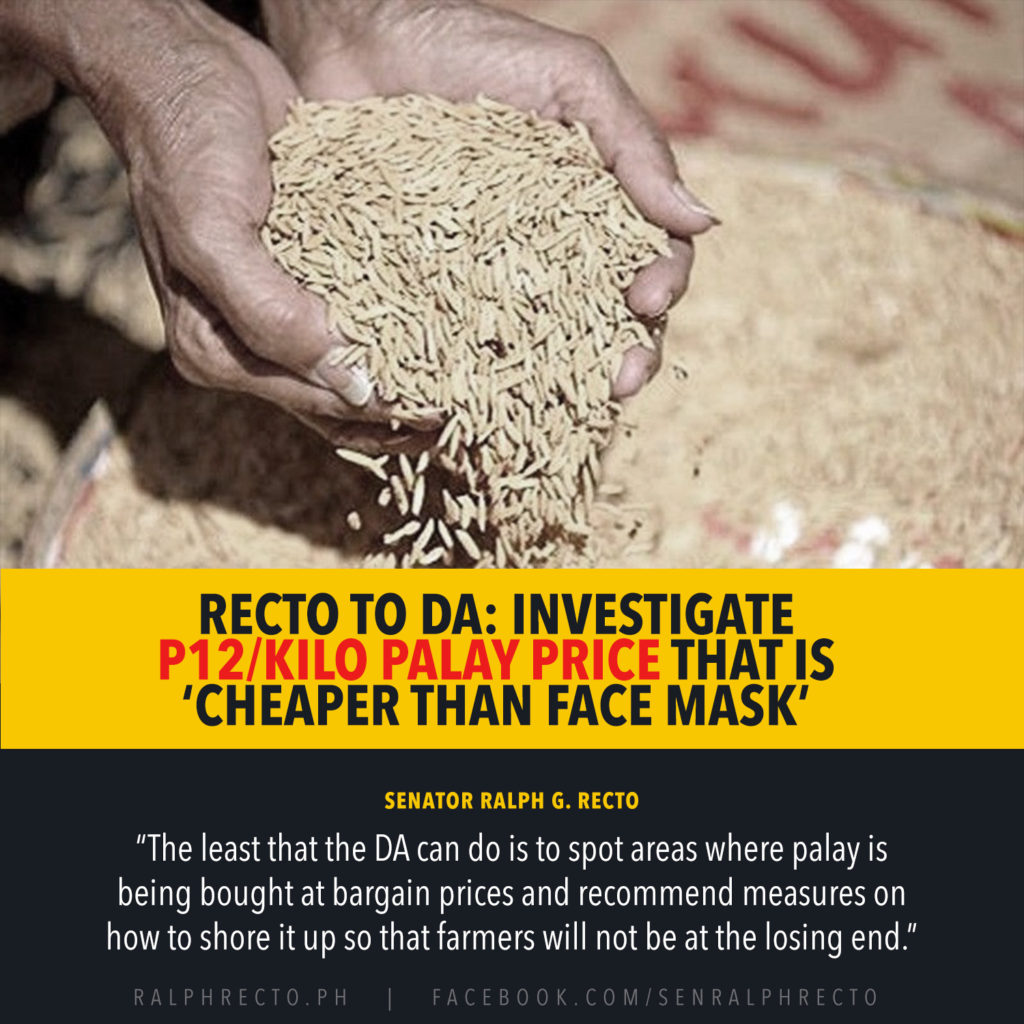Gov’t told to probe, act on P12 palay price that is “cheaper than face mask”
The Department of Agriculture (DA) has been urged to look into reported low buying price of palay, with farmers taking to social media to gripe that a newly-harvested kilo is being bought at P12, “which is lower than the price of a face mask,” Senate President Pro Tempore Ralph Recto said.

As of the first week of September, government official reports peg at P17.64 the average farm gate price of a kilo of palay, but Recto said “this should be verified, because this may not be what is happening on the ground.”
“The least that the DA can do is to spot areas where palay is being bought at bargain prices and recommend measures on how to shore it up so that farmers will not be at the losing end,” Recto said.
At that price point, Recto said rice farmers will not be able to recoup their production cost.
At P20.40 a kilo, a farmer will net P33,355 average per hectare, based on a 2018 season cost-returns study on rice production by the government, Recto said.
But at P12 a kilo, “wala siyang kita, as in zero”, Recto said, in applying that buying price on the results of said study.
Recto said some rice production inputs may have increased this year on account of lockdowns, which have made transportation harder and more expensive.
Rice, he added, accounts for 18 percent of value produced by Philippine agriculture. In terms of area, the around 4.65 million hectares planted to the country’s food staple account for the biggest share in cultivated land.
He said palay income is an economic driver in many rural economies, which have been absorbing the recent urban unemployed.
Recto said DA should study to what extent imports are depressing farm prices, “and call for the pulling of the brakes if needed.”
“Akala ko ba, our suki rice exporting countries have adopted a policy of rice nationalism wherein they are limiting, if not banning, the export of rice as a buffer during the pandemic?” he said.
If this is the case, then share of imports, about 13 percent of national consumption, should be filled in by local production, “but it will be impossible to ramp up production if low prices are a disincentive,” Recto said.
“Kung ganyan ‘yan, at hindi maagapan, baka maging plantito at plantita na lang ang mga rice farmers kung nakikita nila na mas mas mahal ang bentahan ng mga ito,” Recto said.(###)

